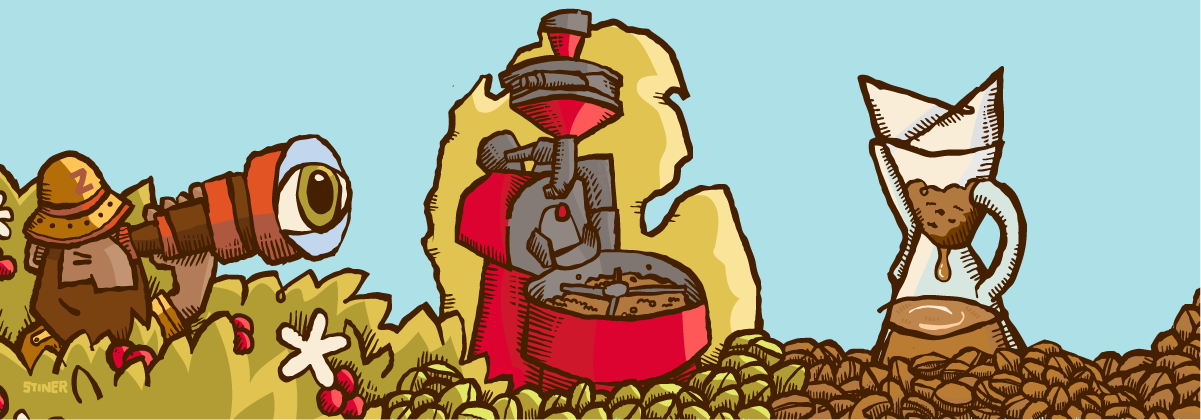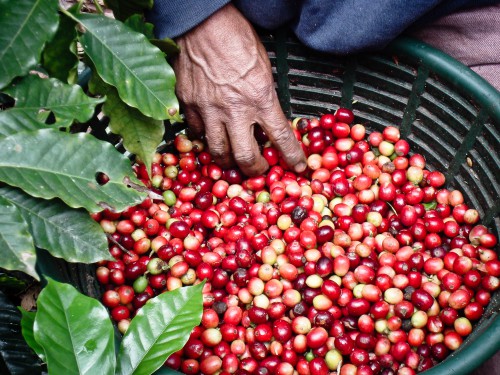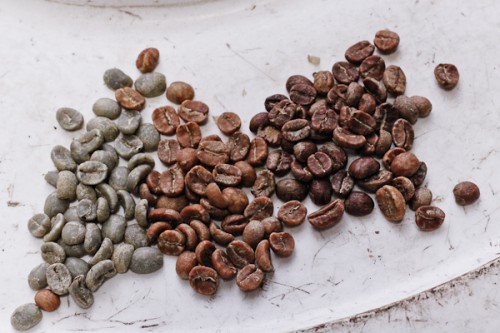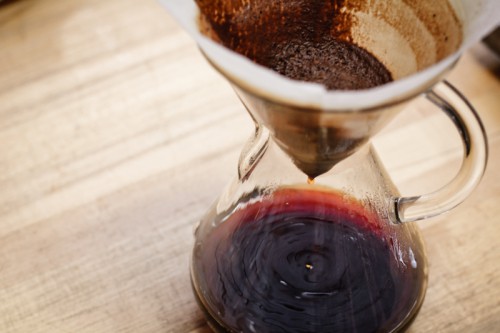Our Philosophy

Our motto, “You really can taste the difference”, is a straightforward description of what we do every day at Zingerman’s Coffee. Each is an important step to the simple enjoyment of a really good cup of coffee. Each of those steps is the result of deliberate choices on our part that begins, literally, with a seed being planted and ends with the coffee in your cup. Actually, the term “seed to cup” is very widely used in the coffee business.
Here, we’ll share our take on each of these important parts of the coffee world, starting with what they have in common. Each represents a phase that requires a lot of development, tasting, testing, re-tasting and finally selection. They also represent a series of relationships from the farmer to you, the consumer. Each piece affects the other and all must work together.
SOURCING
 It’s pretty obvious that you need to start with a good bean to make a good cup of coffee and, to us, flavor is our highest priority when selecting a bean. This means we constantly sample coffees from a given origin until we find the one we will purchase. For any origin, we might try two dozen different samples; cupping coffees from different farms, different processing methods, sizes or grades. So many factors affect the coffee’s flavor development (climate, soil, rainfall, harvest technique), that variation can occur within different locations on a given for. For this reason, we do a lot of cupping and also vet our existing suppliers every crop cycle.
It’s pretty obvious that you need to start with a good bean to make a good cup of coffee and, to us, flavor is our highest priority when selecting a bean. This means we constantly sample coffees from a given origin until we find the one we will purchase. For any origin, we might try two dozen different samples; cupping coffees from different farms, different processing methods, sizes or grades. So many factors affect the coffee’s flavor development (climate, soil, rainfall, harvest technique), that variation can occur within different locations on a given for. For this reason, we do a lot of cupping and also vet our existing suppliers every crop cycle.
Since there are so many coffees available, our selection usually starts with one of the relationships we have with growers and importers. These relationships give us details on the coffee from the cultivar, processing methods, drying, sorting, etc. As we develop long-term relationships, we are able to work with producers on specific flavor characteristics. We are also able to better understand the needs of the individual producers and their communities.
ROASTING
 Coffee roasting is truly a craft — a combination of science, craft and style. There are a number of physical changes that occur transforming the small, flavorless, hard “green” bean into the flavorful finished coffee. The physical changes are obvious — the bean loses water and weight while puffing up in size, browning and becoming brittle. Others are subtle like sugar and acid development.
Coffee roasting is truly a craft — a combination of science, craft and style. There are a number of physical changes that occur transforming the small, flavorless, hard “green” bean into the flavorful finished coffee. The physical changes are obvious — the bean loses water and weight while puffing up in size, browning and becoming brittle. Others are subtle like sugar and acid development.
Any given bean can be roasted to develop and accentuate more sweetness or more acidity or dark flavors as a result of the roast by-products. Even two roasts of the same color can taste wildly different. Very small differences in heat input at different times and for different lengths will affect flavor. Knowing how to bring out the subtle characteristics of a coffee is the craft of the roaster.
Determining what is “right” reflects both the craft of the roaster as well as stylistic preference. At Zingerman’s Coffee Company, we prefer sweet, clean, well developed roasts over sharp, tart acidity. When we roast coffees that have a crisp acidity we like it to be balanced.
BREWING
 Brewing is the last and equally important step requiring technical, craft and stylistic choices. There are many factors we take into account from water chemistry to grind to choice of brewer and filter. At our retail shop we brew coffees using seven different brewing techniques. Each method brings out differences in the brew and the differences can be great. Our experience has shown that there are always two or three methods that really show off the coffee in the best light.
Brewing is the last and equally important step requiring technical, craft and stylistic choices. There are many factors we take into account from water chemistry to grind to choice of brewer and filter. At our retail shop we brew coffees using seven different brewing techniques. Each method brings out differences in the brew and the differences can be great. Our experience has shown that there are always two or three methods that really show off the coffee in the best light.
Simply put, there is no “one size fits all” for a given coffee. A press-pot that is perfect for one coffee might be detrimental to another. Same goes for grind — some coffees need a finer grind than another for a given brew method. We brew all of our coffees using each method until we feel we’ve gotten them “dialed in”. We then post the best methods on our Big Brew Board which is a matrix of the coffees we offer (across the top) crossed with the seven brewing methods (down the side).


